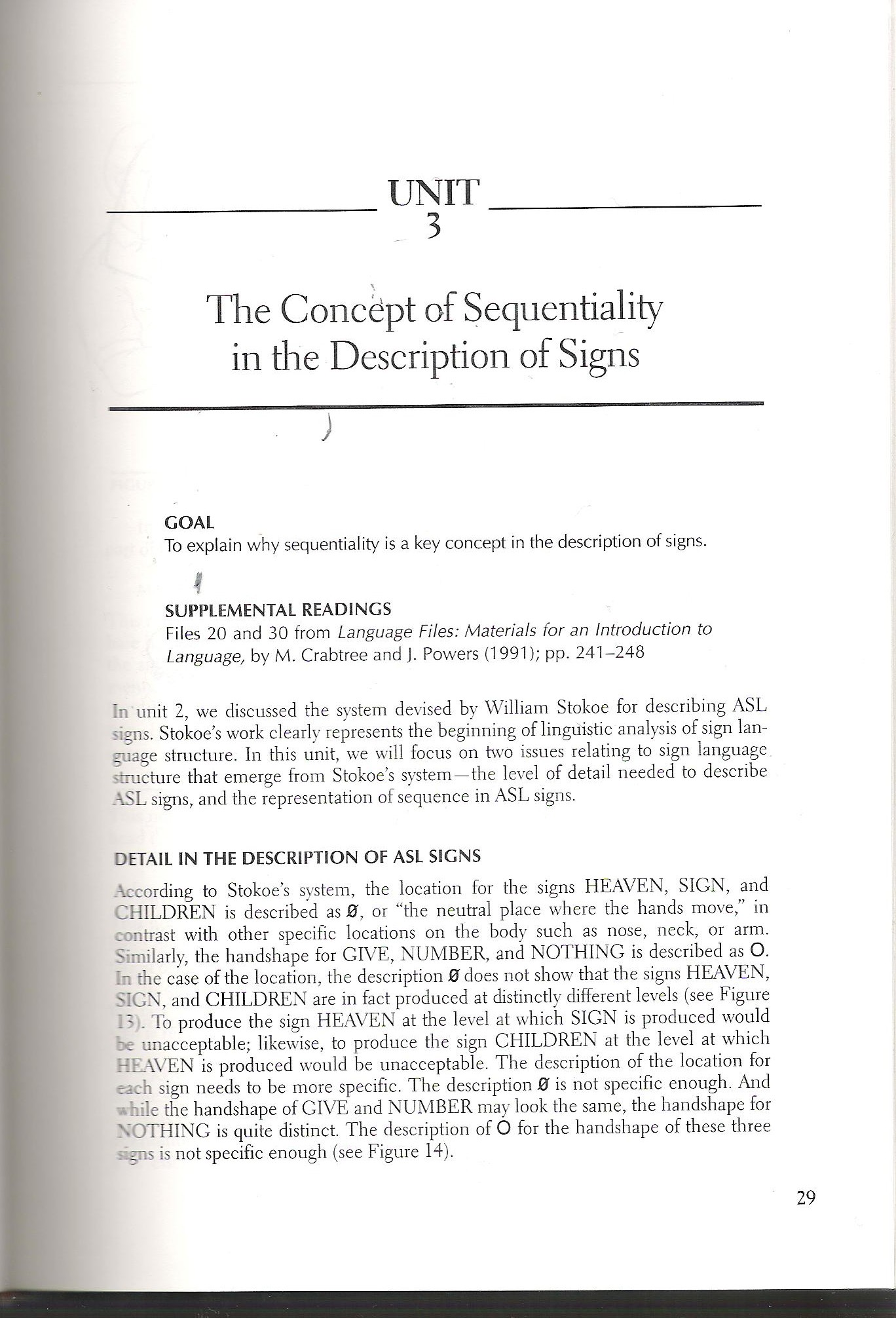Obraz (80)

UNIT
3
The Concept of Seąuentiality in the Description of Signs
~)
GOAL
To explain why sequentiality is a key concept in the description of signs.
SUPPLEMENTAL READINGS
Fiies 20 and 30 from Language Files: Materials for an Introduction to Language, by M. Crabtree and J. Powers (1991); pp. 241-248
.n unit 2, we discussed the system devised by William Stokoe for describing ASL Tgns. Stokoe’s work clearly represents the beginning of linguistic analysis of sign lan-raage structure. In this unit, we will focus on two issues relating to sign language 'tructure that emerge from Stokoe’s system—the level of detail needed to describe ASL signs, and the representation of seąuence in ASL signs.
DETAIL IN THE DESCRIPTION OF ASL SIGNS
\ccording to Stokoes system, the location for the signs HEAVEN, SIGN, and CHILDREN is described as 0, or “the neutral place where the hands move,” in ::ntrast with other specific locations on the body such as nose, neck, or arm. Similarly, the handshape for GIVE, NUMBER, and NOTHING is described as O. H :he case of the location, the description 0 does not show that the signs ElEAVEN, SIGN, and CHILDREN are in fact produced at distinctly different levels (see Figurę ~ .To produce the sign HEAYEN at the level at which SIGN is produced would : e unacceptable; likewise, to produce the sign CHILDREN at the level at which HEAYEN is produced would be unacceptable. The description of the location for rrch sign needs to be morę specific. The description 0 is not specific enough. And • nile the handshape of GIYE and NUMBER may look the same, the handshape for N DTHING is quite distinct. The description of O for the handshape of thesc three ms is not specific enough (see Figurę 14).
29
Wyszukiwarka
Podobne podstrony:
15193 Obraz (83) unimportant in the description of signs. W hat this means is that he proposed a str
Obraz (86) _UNIT _____ 4The Movement-Hold Model GOAL To explain the basie principles of the Movement
Knowledge W1 Knowing the basie concepts and areas in the domain of Al. . W2 Knowing the character
CSG046 Unit 4The Preterit TenseRegular Verbs in the Preterit The preterit (el preterito) is one of s
UNIT 3THE STRUCTURE OF THE SKIN The skin is composed of two main layers: a thin outer layer, known a
• Analysing the results of tests and examinations in the national scalę and report
nwsf 2 New Writings in SF is a successful departure in the science fiction field, bringing&nbs
DSC00669 „This concept of scardty leads to the idea of opportunity cost The opportunity cost ofan ac
21 Icon Painting in the Ukrainę 25 Thus, next to the saints common in the Orthodox Church, patr
więcej podobnych podstron